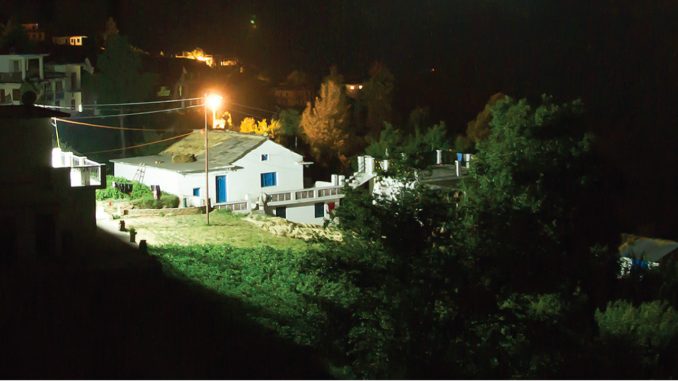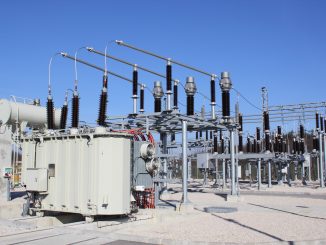
In order to fulfil the target of “Power for All” by March 2019, the prime minister announced the Pradhan Mantri Sahaj Bijli Har Ghar Yojana, also known as “Saubhagya”, on September 25, 2017. The scheme has the mandate to provide electricity connections to over 30 million families in rural and urban areas by December 2018. With a total outlay of Rs 163.2 billion, Saubhagya essentially aims for last-mile connectivity to willing households as opposed to only villages.
“Under Saubhagya, every household in the country will be given an electricity connection. No price will be charged for the poor to get an electricity connection and the government will go to their houses to give them the connection,” the prime minister stated while launching the Saubhagya scheme. What are Saubhagya’s key features, proposed benefits and challenges? Power Line takes a look…
Rural electrification so far
Till about 2005, various schemes had been launched for rural electrification, such as the Pradhan Mantri Gram Uday Yojana (2000-01), the Accelerated Rural Electrification Programme (2002) and the Accelerated Electrification Programme (2004). However, the first major push to the country’s rural electrification programme came from the Rajiv Gandhi Grameen Vidyutikaran Yojana (RGGVY), which was started in 2005. The RGGVY targeted electrification of all households and villages, as well as free electricity connections to below poverty line (BPL) families. The rate of electrification under the RGGVY was brisk in the initial years, with nearly over 19,000 villages being electrified per annum during the period 2005-07. It subsequently slowed down to 12,232 villages per annum from 2007 to 2012 and further to just 1,892 villages per annum from 2012 to 2014.
Then, with the NDA government’s renewed focus on rural electrification, in December 2014, the Deendayal Upadhyaya Gram Jyoti Yojana (DDUGJY) was launched. This subsumed the RGGVY and carried forward its targets. Two additional components were added – separation of agricultural and non-agricultural electricity feeders to improve supply for consumers in rural areas, and improvement of sub-transmission and distribution infrastructure in rural areas.
The DDUGJY will continue to be operational till 2021-22, with an outlay of Rs 823 billion, which includes a budgetary support of Rs 689 billion. The target under the scheme was to electrify the remaining unelectrified villages – pegged at 18,452 villages as of March 2015. This target is now nearly met, with less than 3,000 villages remaining to be electrified.
Rationale for Saubhagya
With Saubhagya, the government has strengthened the DDUGJY for electricity delivery to the end-users. This is because, as per the government’s policy, a village is considered electrified if at least 10 per cent of the households in it have access to electricity through the establishment of the basic infrastructure. This definition excludes actual electricity connections or supply to the households.
Consequently, as per DDUGJY data, of the total 179.5 million rural households, 40 million (23 per cent) do not have any access to electricity. Thus, while the villages are considered to have been “electrified”, in fact, 40 million of these households are yet to get access to electricity. There are just six states that have managed to achieve 100 per cent household electrification. The household electrification levels are the worst in states such as Jharkhand, Bihar and Uttar Pradesh. As per government data, while 86 per cent of Jharkhand’s villages are considered electrified, only about 45 per cent homes actually have electricity connections. In Uttar Pradesh, where 96.5 per cent of the villages are electrified, only 52 per cent of the households have electricity connections. In Bihar, 89 per cent of the villages are electrified but only 48 per cent households have electricity access.
Key features of Saubhagya
- Coverage: There are about 40 million unelectrified households, of which about 10 million BPL households in rural areas have already been covered under the DDUGJY’s sanctioned projects. Thus, a total of 30 million households (25 million households in rural areas and 5 million in urban areas), are expected to be covered.
- Timelines: The scheme runs into two financial years – 2017-18 and 2018-19.
- Provision of connections: Last-mile connectivity to households would imply the provision of electricity connections by drawing a service cable from the nearest electricity pole to the household premises, installation of an energy meter, wiring for a single light point with an LED bulb and a mobile charging point.
- Payment: The scheme takes care of the capital expenditure required for providing connections. The end-consumers are required to pay only a nominal amount of Rs 500, which is adjusted in the electricity bill in monthly instalments. These payments are applicable for households above the poverty line. For those below the poverty line, no payment is required at all.
- Beneficiaries: The beneficiaries of free electricity connections will be identified using the Socio Economic and Caste Census (SECC) 2011 data.
- Steps for implementation: Project proposals will be prepared by the state and sanctioned by an interministerial monitoring committee. The electrification works for the sanctioned projects will be executed by the state discoms through turnkey contractors or departmentally, or through other suitable agencies.
- Remote village connectivity: The scheme envisages covering remote areas by providing families with a solar power pack, including a solar panel, a 300 watt battery, five LED lights, a DC fan, and a DC power plug.
- Use of technology: Mobile apps and web portals will be used to organise camps in villages to identify beneficiaries. In order to accelerate the process, applications for electricity connections will be completed on the spot.
- Total outlay: The total allocation under the scheme is Rs 163.2 billion, of which Rs 123.2 billion will be fresh budgetary allocation. This amount is over and above the investments being made under the DDUGJY.
- Allocation for rural households: Of the Rs 123.2 billion budgetary allocation under the scheme, almost 85 per cent or Rs 105 billion will be for the electrification of rural households.
- Allocation for urban households: Since there are fewer urban unelectrified households, the budgetary allocation for such households has been kept at Rs 17.32 billion. This allocation will come from savings under the Integrated Power Development Scheme (IPDS).
- Financial support: Projects will be funded by a 60 per cent grant by the Government of India, 10 per cent by the respective states and 30 per cent through loans. For special category states, these shares will be 85 per cent, 5 per cent and 10 per cent respectively.
- Incentive for timely completion: States that are able to achieve the target by the deadline will be given an additional 15 per cent grant by the centre as incentive.
- Nodal agency: The Rural Electrification Corporation, which is implementing the DDUGJY, is the nodal agency for Saubhagya as well.
Issues and concerns
One of the biggest challenges in implementing Saubhagya is its daunting timeline. To meet the scheme’s targets, almost 2 million households would need to be electrified in the next 15 months. This is significantly higher than the average rate of household electrification of just 0.35 million villages per month since May 2017.
Another big concern relates to the efficacy and ability of the discoms to deliver on the scheme, given that they are saddled with high aggregate technical and commercial losses and have poor networks. The power ministry has, however, clarified that complementary schemes, such as the IPDS and DDUGJY, which target the replacement of transformers, metering improvements and system upgradation, are expected to help check losses and improve the power infrastructure. Cost recovery from low-end consumers is another concern, as also the reluctance of such consumers to get connections.
Opportunities and outlook
These concerns notwithstanding, Saubhagya is expected to give a major fillip to transmission and distribution (T&D) industry players. Of the total outlay proposed under the scheme, a large part of the expenditure would be earmarked for meters and last-mile connectivity. Also, wherever the transmission lines do not go up to the households, there will be some expenditure on distribution poles, lines and transformers. Thus, T&D companies in the transformer, cable, insulator, transmission line, substation and metering businesses are expected to benefit significantly from the contracts awarded under the scheme. Further, it is expected that Saubhagya would help improve the power demand of discoms as they need to procure short- to medium-term power as more households get connected. The last-mile connectivity would kick-start power purchases, which have been virtually stagnant for the past two to three years.
In sum, the success of the scheme will hinge on the initiatives of the state governments, their efforts towards the metering of new consumers, as well as initiatives for ensuring reliable and quality power supply. For now, the challenge for the centre and the states will be to speed up the preparatory steps, draw up implementation plans and award contracts in the next couple of months.




